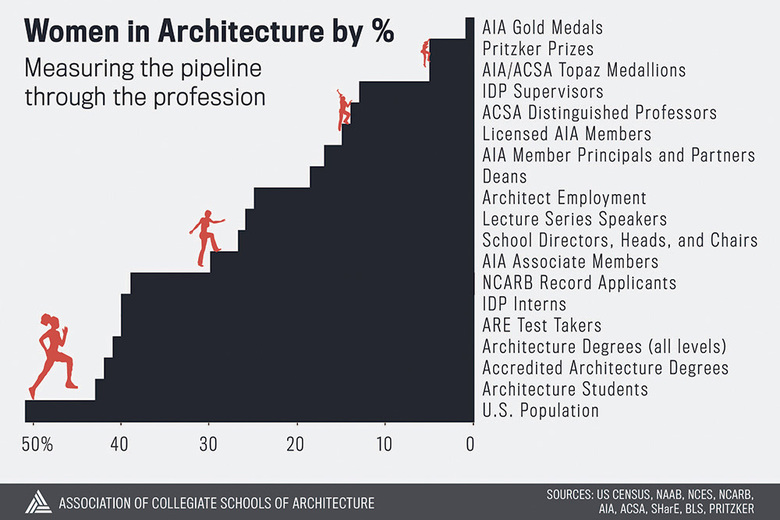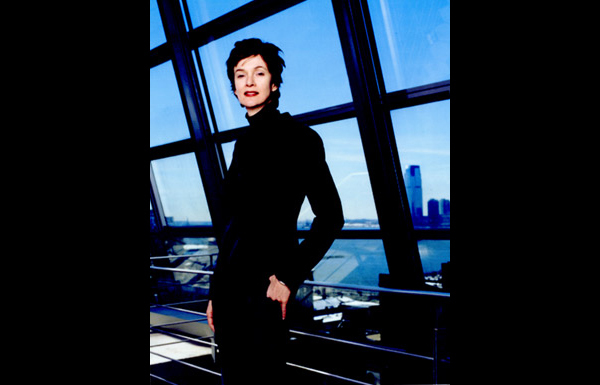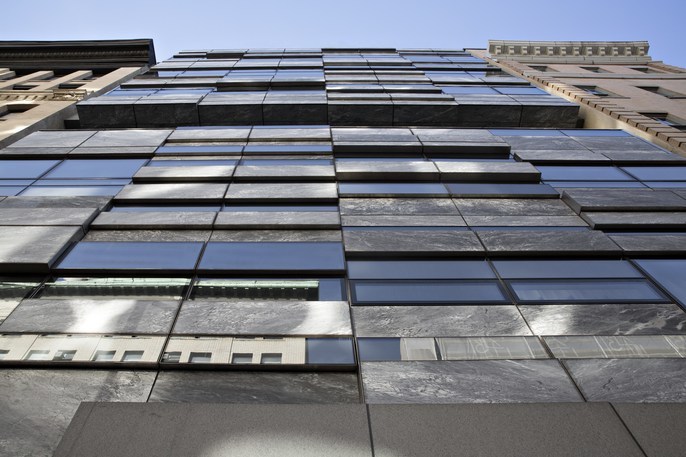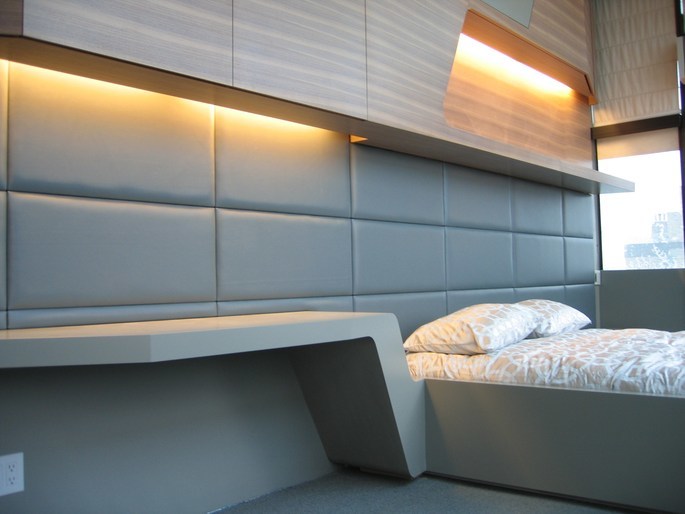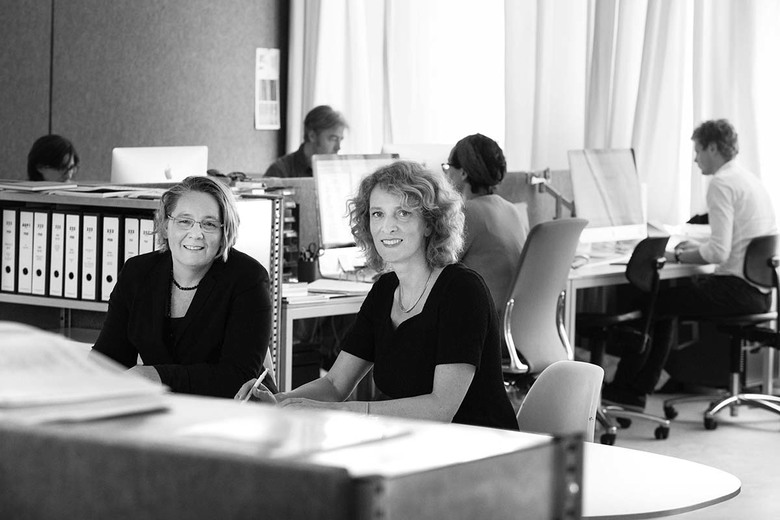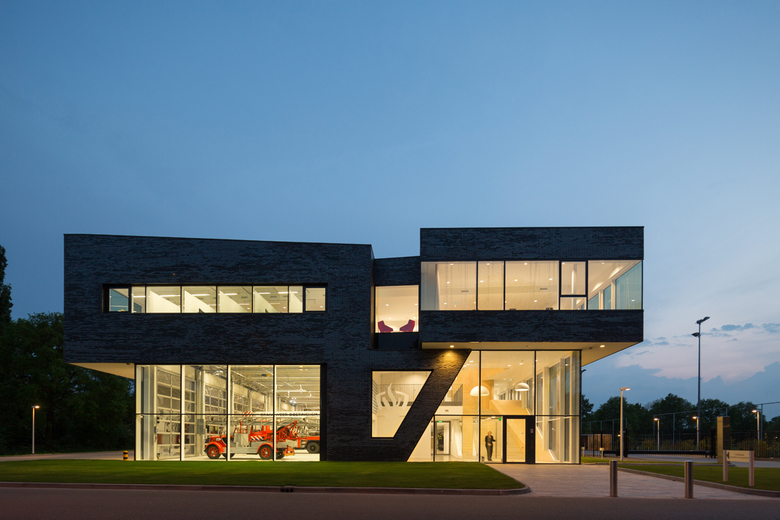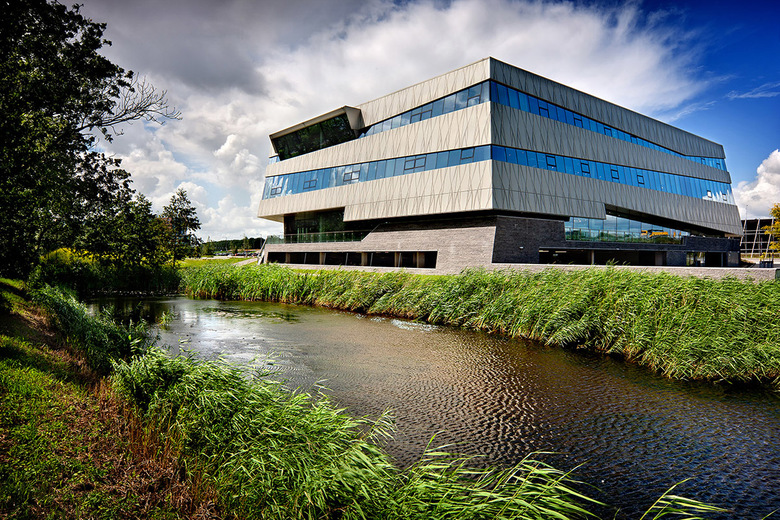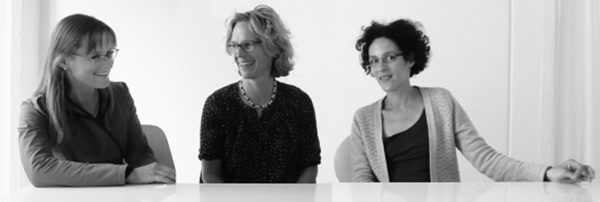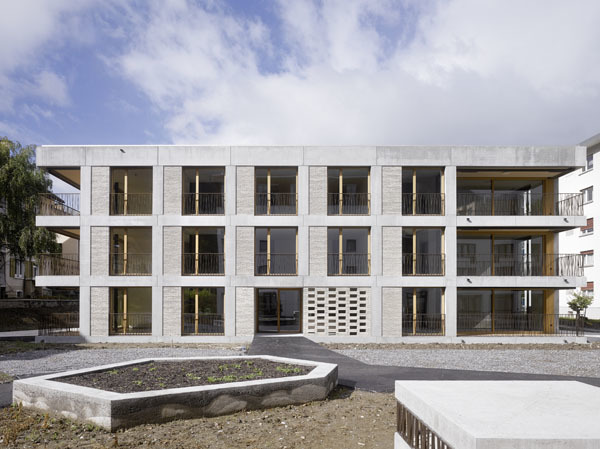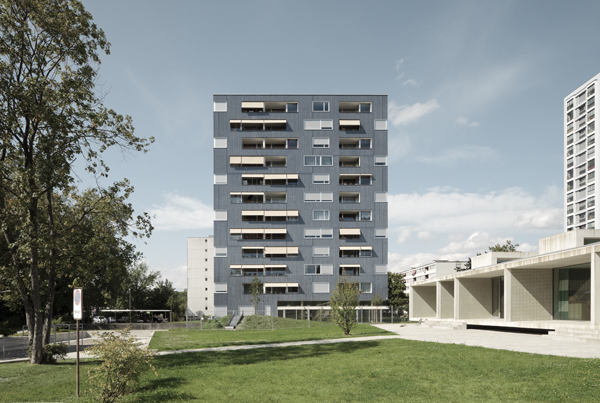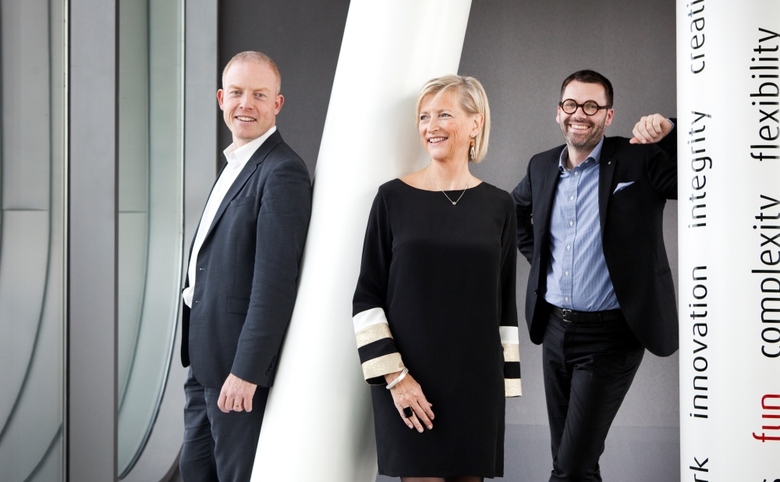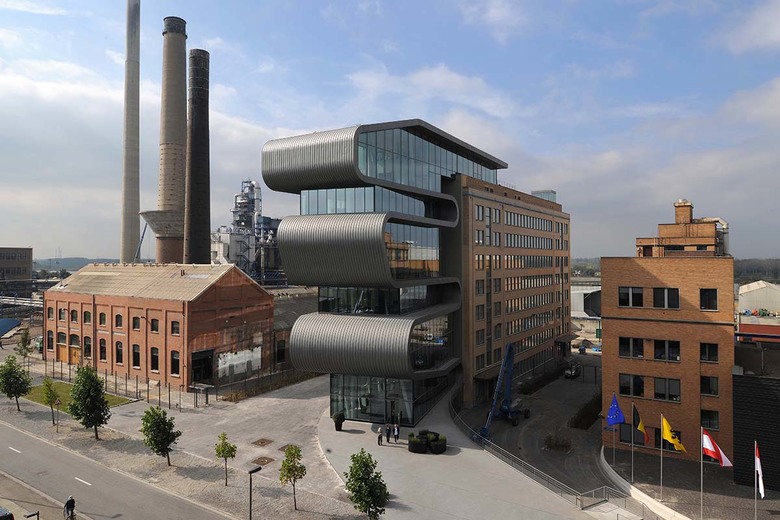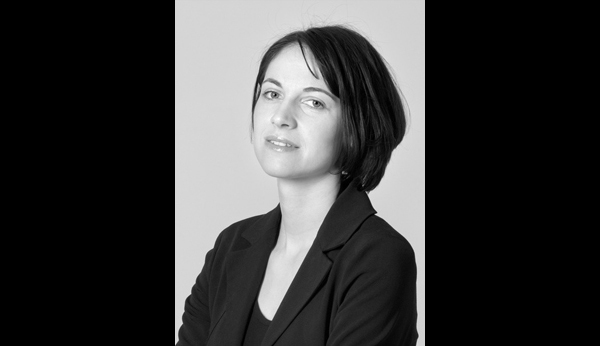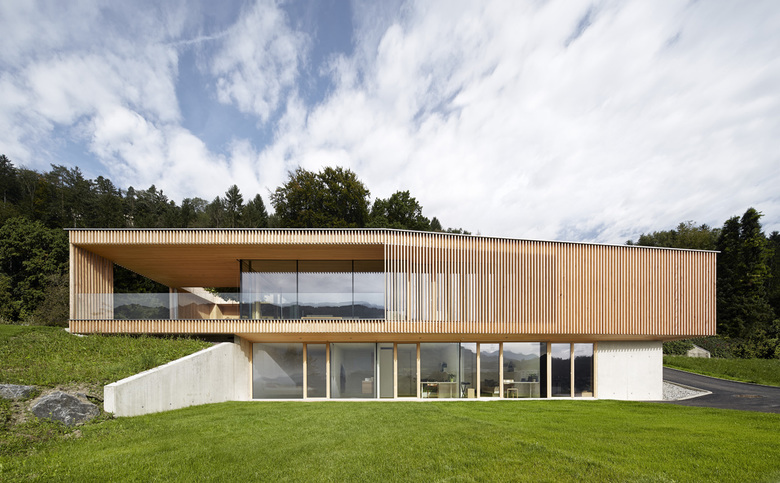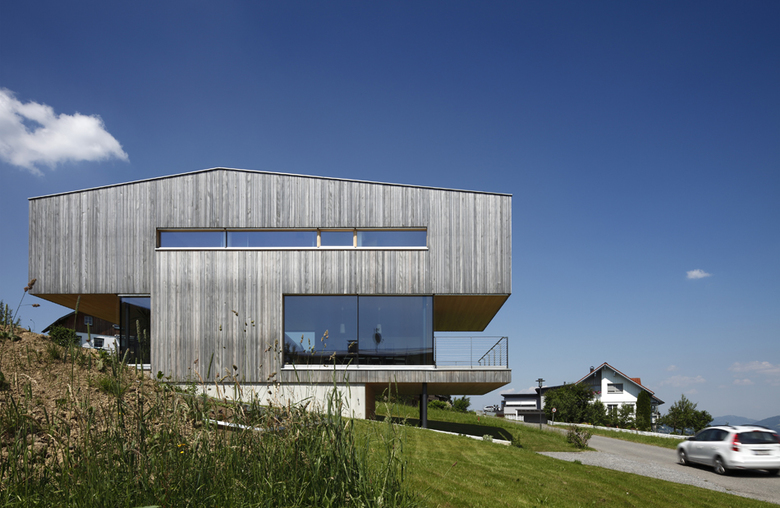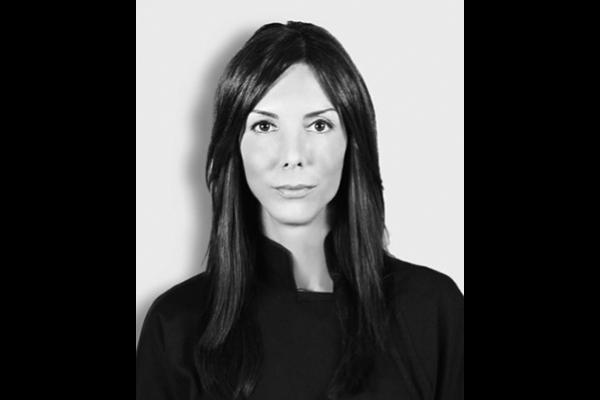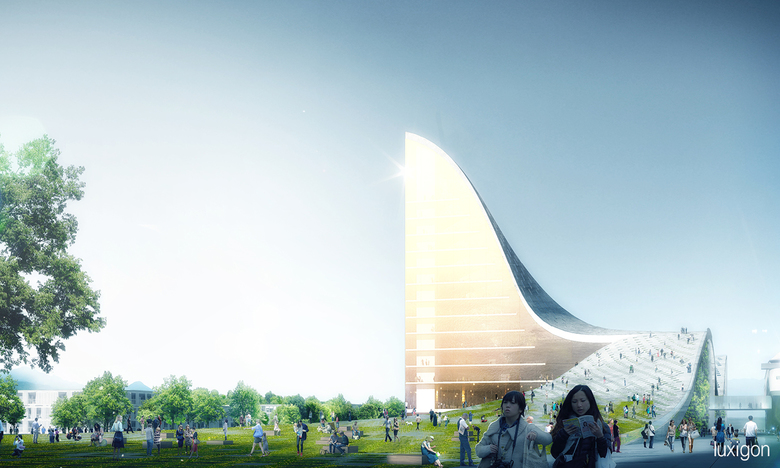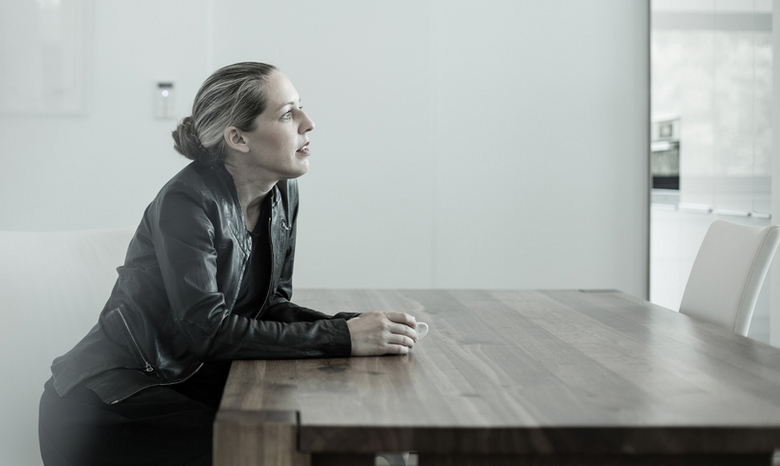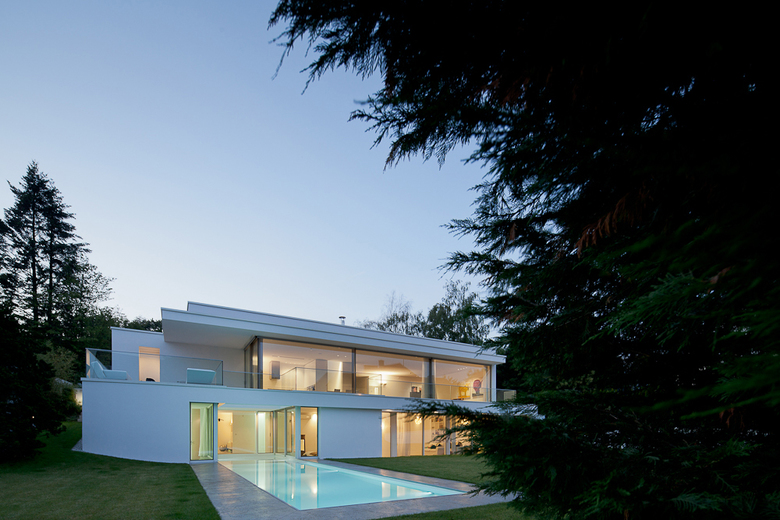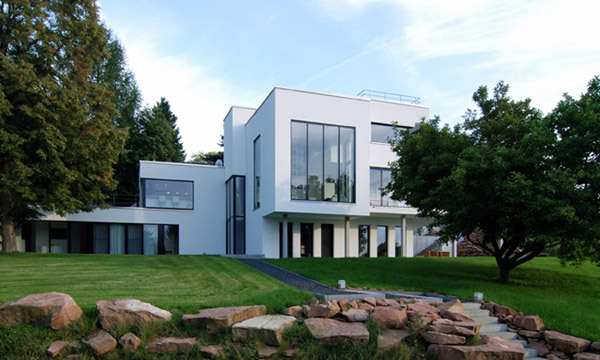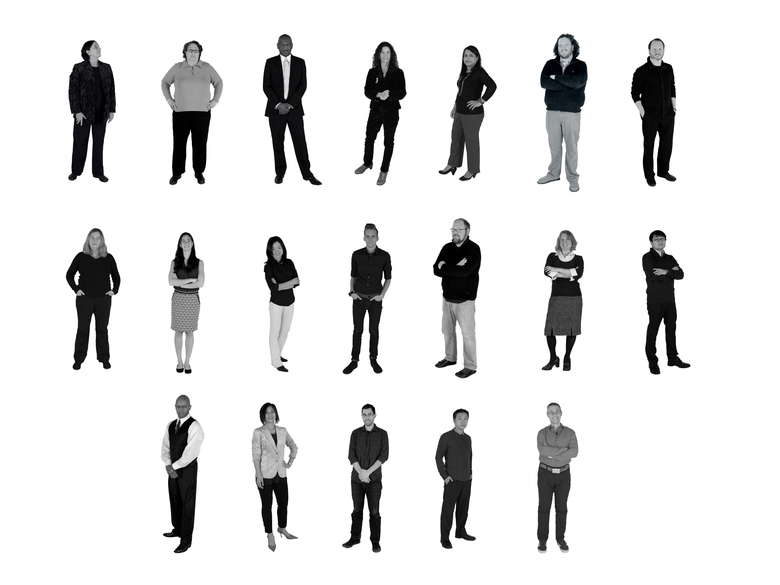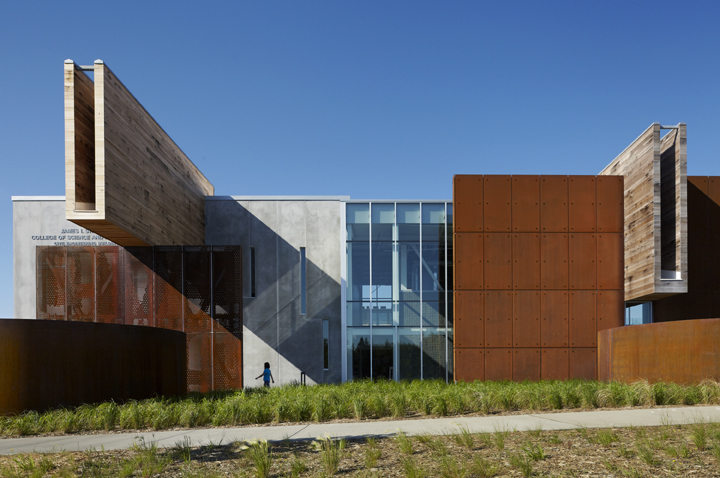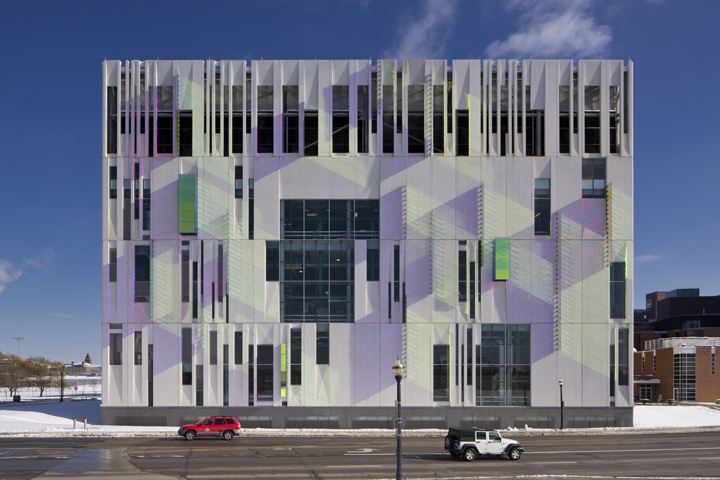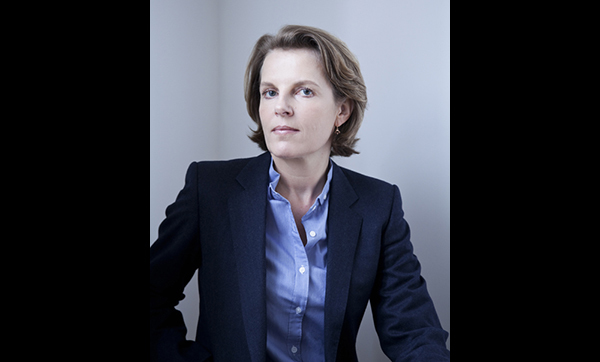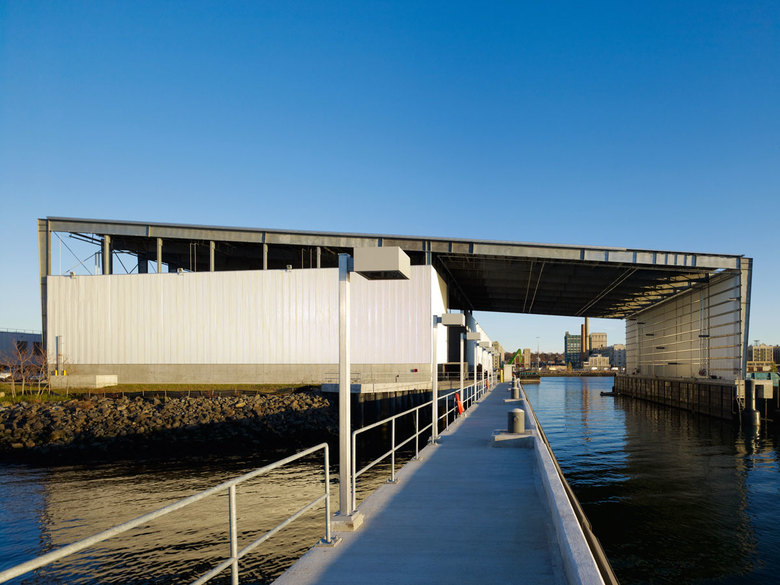A Short Survey of Women in Architecture
Gender equality in architecture has been an increasing concern in recent years, most overtly since Denise Scott Brown called for a retroactive Pritzker Prize in 2013. To get some impressions on the current state of women in the architecture profession, we surveyed eleven women-owned, World-Architects member firms.
The above graphic clearly depicts the decreasing number of women in higher positions of architecture, a condition not limited to the United States. The chart is part of an October 2014 ASCA report that asks, "Where are the women?" It's evident from the report that there is a disconnect between the fairly high number of women in architectural schools (43%) and the lower number of women entering the profession (25%) and leading their own firms (17%). This is just one issue that also came up in responses to the questions we sent World-Architects member firms from Austria, Belgium, Germany, the Netherlands, Switzerland, and the United States.
The Pritzker jury may have denied Scott Brown a retroactive award, and the above numbers are striking, to say the least, but the women we interviewed share a hope that things will improve as they and more women continue to create quality architecture. Read on for responses and highlighted projects from Winka Dubbeldam, Christine Conix, Carol Ross Barney, Tilla Theus and other leading women in architecture. Be sure to click on the firm names to visit their respective profiles and projects on World-Architects.
Archi-Tectonics
Archi-Tectonics
New York, NY, USA
Owner: Winka Dubbeldam
Founded: 1994
W-A: What is your take on the state of women in architecture today?
WD: There are not enough woman practitioners who run their own business, but there are great woman architects who own the business with a partner, and for sure we have great women in the academic world. The real fight is for equal rights and opportunities.
How would you describe your role, as an owner of an architecture firm, in shaping discussions about women in architecture?
I work on this as Chair of the Department of Architecture at the university of Pennsylvania, and I hire woman and men equally in my studio in NYC. Furthermore I coach quite a few women during their career.
Is there a different approach to design/architecture for (most) women compared to (most) men? If so, what?
Not that I know of !
What do you see as key for overcoming the issues (equal pay, underrepresentation, etc.) women face in the architectural profession?
It is something we as academic leaders can fight for, and women for now will have to really stand up for themselves!
Bekkering Adams Architecten
Bekkering Adams Architecten
Rotterdam, Netherlands
Partners: Juliette Bekkering, Monica Adams
Founded: 1997 by Juliette Bekkering, with Monica Adams in 2005
W-A: What is your take on the state of women in architecture today?
B-A: It is our take that women are still way too invisible in the world of architecture. Although the number of women in all fields (clients/project-managers/architects' offices) is slowly rising, architecture is still a predominately male profession, as is the construction business as a whole. In the academic world the number of female students has steadily been growing in the last decades to around 40-50%, however their number actively working in the architectural field rapidly decreases after graduation. In the teaching field numbers go down to around 20%. Female professors are even more rare. You see the same tendency in the architectural offices. The percentage of female architects in leading positions in architecture offices is lower than you would expect, considering the amount of female architects leaving the universities. This is even more extreme if you look at the amount of women leading their own office. When you look at graphic representations of the actual figures, like the one here (More men named John run big companies then all women), might look like a joke, but regretfully in 2015 are still a reality.
How would you describe your role, as an owner of an architecture firm, in shaping discussions about women in architecture?
We feel it is our task to be a role model for other women: young students, young professionals and colleagues, to show that the architectural world and the construction business as a whole, is not run only by men. For that reason we are always looking to keep our staff in a good balance between men and women. It has also been one of the reasons for Juliette Bekkering to become Full Chair Professor in Architectural Design and Engineering in Eindhoven. As an office we do not have a manifesto on this issue, but we are aware that until the numbers after graduation become more equal, it will be necessary to show to young women that of course women can be successful in architecture. Just by making ourselves and our work visible we promote the fact that it is possible, but also that it is important to stand up for your opinion and ideas about architecture. No matter if you are a man or a woman, you have to fight to be taken seriously; architecture is no easy profession, you do not get things for granted. On the contrary: in architecture it is essential to act and be confident, to show that you can stand your ground in discussions and are able to make decisions – that you can fight and stick to your original ideas.
Is there a different approach to design/architecture for (most) women compared to (most) men? If so, what?
We do not believe that there is a different approach between men or women architects in architectural design as such. But we do see different approaches between architects as individuals. Perhaps you could say there is a difference between a male and a female in approaching the process of the design. This is not so much about architectural style, but about the way the process is managed and how communication is used to perceive a more complex and "rich" end-project. We believe the female approach is inclusive: allowing more different opinions and elements to be considered before the final decisions are reached. The male approach is more single minded, more exclusive. However this does not mean that a woman cannot use a more male approach and a man cannot use a more female approach. In the ideal world we think everyone should be able to use both approaches, whatever is needed for the occasion.
What do you see as key for overcoming the issues (equal pay, underrepresentation, etc.) women face in the architectural profession?
As soon as there are more women at the top, issues about inequality and underrepresentation etc. will change. Dissolving the old-boys network, making it more equal, is the only way to change those issues into a more equally shared world. We feel women should show more pride in what they achieve. Women have the tendency to be too modest; in general men are more frank about their achievements. We see a chance for women in the new economics; more and more it is necessary to work together in teams, sharing knowledge and expertise. Women are excellent in that. We should market our ability to connect and to communicate, and use it to make more complex networks then just the old-boys network alone. We strive for a construction business that is more equal in the gender of all participants – the less it is about gender, the more it will be about content, expertise and knowledge. To come back to the earlier question: that is our reason to take our role model as women architects serious.
Chebbi | Thomet | Bucher Architektinnen AG
Chebbi | Thomet | Bucher Architektinnen AG
Zürich, Switzerland
Partners: Dalila Chebbi, Claudia Thomet, Karin Bucher
Founded: 2001
W-A: What is your take on the state of women in architecture today?
KB: Unfortunately, men still occupy the majority of managerial functions in architecture and the building industry. This means that we women automatically have a special status in general.
Is there a different approach to design/architecture for (most) women compared to (most) men? If so, what?
Women have a different feeling for architecture than men do, in our opinion. This difference flows into the design process and influences decisions that are ultimately embodied in real spaces.
What do you see as key for overcoming the issues (equal pay, under-representation, etc.) women face in the architectural profession?
Inequality between women and men in leadership positions exists not only in architecture, but also in other areas of work. The key to changing this would be to change the underlying conditions so that more women could work in management. It would also be essential that the work of women be regarded as highly as that of men.
CONIX RDBM Architects
CONIX RDBM Architects
Antwerp, Belgium
Owners: Christine Conix, Jorden Goossenaerts, Frederik Jacobs
Founded: 1979
W-A: What is your take on the state of women in architecture today?
CC: I believe there’s a good equilibrium between men and women in architecture nowadays. Architecture isn’t dominated by men only, nor is it more suitable for men or women exclusively. We are all equal when creating.
How would you describe your role, as an owner of an architecture firm, in shaping discussions about women in architecture?
People often ask me this question. It seems to me that people are biased to the idea of an architecture dominated by men. But that’s not correct, like I said earlier.
This theme of men vs. women shouldn’t be one of our concerns. It’s all about passion, talent and vision. Whether that would be a man or a woman is not important.
Is there a different approach to design/architecture for (most) women compared to (most) men? If so, what?
Every architect or architectural company has his own take on architecture. We search for a unique answer to a unique place, creating identity and enduring value.
Our office always starts an assignment based on emotions. This EQ or Emotional Quotient of a building is really important to me and results in – what I like to call – an added value. I believe, at least for me, that these emotions, tactility and subtleness are mostly brought into the architectural process by women and has developed itself as a constant feature throughout our work. And it’s always interesting to see how men and women interact and co-create in that way.
What do you see as key for overcoming the issues (equal pay, underrepresentation, etc.) women face in the architectural profession?
At CONIX RDBM Architects the salary isn’t gender biased. One is compensated based on his or her skills and accomplishments. The underrepresentation isn’t necessary a consequence of an inequality between men and women. It has more to do with availability and the wish/possibility to work full time, or even double time. The profession of architecture is very time consuming, not everyone – man or woman – can or wishes to do this.
HELENA WEBER Architektin ZT
HELENA WEBER Architektin ZT
Dornbirn, Austria
Owner: Helena Weber
Founded: 2008
W-A: What is your take on the state of women in architecture today?
HW: While a large proportion of architecture students graduating in central Europe are female, many of those do not stay in the domains that are immediately related to architecture as an art and profession. Only a small proportion of women finally work as an independent architect. As a consequence one sees only few female architects who visibly shape the discipline. There may be several possible explanations for this phenomenon; this is clearly a complex issue with societal, political and personal elements.
Is there a different approach to design/architecture for (most) women compared to (most) men? If so, what?
I consider it of upmost importance that in addition to an aesthetic approach there is a lot of emphasis on atmosphere and poetry in the design of space. Authenticity in terms of local material, ecological aspects and attention to the respective environment are key. To keep in addition and foremost the needs of the users in mind is of central importance. Whether the varying degree of focus on those aspects among different architects is a question of personality, culture or gender is not so clear. I am inclined to consider cultural background as the most influential factor.
There are a lot of stereotypes around as to what is considered a masculine or a feminine element in architecture. Just as in general when specifying stereotypes, there is a whole spectrum and one can see men who are more "feminine" than some women (and vice versa), and this is the case for architecture, too. That is why I like to think in terms of the distinct style of an architect rather than categories, and male/female elements of that style are just one possible cross-section.
What do you see as key for overcoming the issues (equal pay, underrepresentation, etc.) women face in the architectural profession?
If a young woman likes to become an architect in Austria there are no particular general barriers. I do however observe that the typical roles in society of men and women are not in favor of encouraging a large proportion of women toward architectural activities, let alone toward leading positions in architectural enterprises. This point leads to interesting questions and should be discussed much more: how can we avoid missing any potential in terms of human resources, creativity and diversity for shaping our living space around us?
PAR - Platform for Architecture + Research
PAR - Platform for Architecture + Research
Los Angeles, CA, USA
Partners: Jennifer Marmon, Angus Goble
Founded: 2003
W-A: What is your take on the state of women in architecture today?...
JM: In the US, issues about diversity are more at the forefront than they have ever been. There’s an opportunity for these discussions to inform people’s opinions about challenges that any group, and in this case women, face.
How would you describe your role, as an owner of an architecture firm, in shaping discussions about women in architecture?
I believe my role is simply to continue my work and strive for excellence just as my colleagues and mentors do.
Is there a different approach to design/architecture for (most) women compared to (most) men? If so, what?
Differing approaches to architectural design seem to be most influenced by design ideology and process which emerge from a combination of personal identity and professional training. I think distinctions such as nationality, geography and culture along with academic and training experiences have significant influence on architectural approach. Whereas gender has a nuanced influence that, in most cases, is more difficult to trace.
Philipp Architekten
Philipp Architekten
Untermünkheim, Germany
Owner: Anna-Theres Marie Philipp
Founded: 1987
W-A: What is your take on the state of women in architecture today?
AP: While I was a student the gender distribution was fairly balanced. What surprises me today is that only few of my former female fellow students are engaged in an occupation or even run their own office. Perhaps there is a lack of courage in self-employment or starting a family becomes more important. I think that most female architects are working in the second row.
How would you describe your role, as an owner of an architecture firm, in shaping discussions about women in architecture?
I grew up in a family of architects and was able to build my first house in the first semester of my studies. I could incorporate my architectural language in my father’s architectural office even before I became the managing director there 10 years ago. Being a woman in this profession never was an issue. What mattered was the passion and the desire to take responsibility. And of course my performance. This attitude I also have toward my students. As a university lecturer, I support both young male and female students to pursue this career choice confidently and determined. It is a matter of whether someone is good at what he does and not what gender he or she has.
Is there a different approach to design/architecture for (most) women compared to (most) men? If so, what?
My passions are houses and villas, exceptional and exclusive. For me, the center of design is the human being. Therefore, I understand architecture as a second skin, which must be tailored. My approach to design is usually very intuitive. Every now and then I even dream ideas for the houses of my clients. In contrast, men often approach it on the technical side. They are more concerned with the structural or static. And as a woman I see a house not only from an aesthetic but also everyday lifestyle and family-friendly point of view.
Ross Barney Architects
Ross Barney Architects
Chicago, IL, USA
Principals: Carol Ross Barney, Laura Saviano, Eric Martin, Roxanne Henry
Founded: 1981
W-A: What is your take on the state of women in architecture today?
CRB: The state of women in architecture is better than it was yesterday. But there is still a long way to go. Even though men and women have been entering architecture schools in roughly equal numbers for decades, if you view any website or publication on architecture and read about the leaders in the field, you have to wonder where the women went.
How would you describe your role, as an owner of an architecture firm, in shaping discussions about women in architecture?
Obviously I have many reasons to be personally invested in the discussions. And my career has spanned an era of massive change for women in architecture. For example, my graduating class had 3 women out of 100 graduates and today’s classes are drastically different.
Although I have been deeply involved in advocacy of women architects since entering the profession, I think that the time has come to move the discussion away from gaining acceptance for women professionals by demonstrating their competency…actually uber competency in most cases. We need to focus on both client and firm cultures that are obviously non inclusive of women. So far we have always made it the women problem to prove she is "as good as a man" when it may actually be the men, and ironically often women, who don’t have women colleagues or consultants who are the problem.
Is there a different approach to design/architecture for (most) women compared to (most) men? If so, what?
I have been teaching architecture at IIT (Illinois Institute of Technology) for many years now and I do not observe any innate difference in their studio work. I do suspect that selling or collaborating on a design in the real world may require a different approach for women than men and this may be perceived as a different approach to architecture.
Selldorf Architects
Selldorf Architects
New York, NY, USA
Owner: Annabelle Selldorf
Founded: 1988
W-A: What is your take on the state of women in architecture today?
AS: I think that the profession is still dominated by men but that women have made great strides. Even on the development and construction side you encounter more women in leadership positions. But the statistics continue to show that while the schools are more balanced between men and women, more women drop out of the profession. To a large extent I think this has to do with life/work issues and that it isn’t specific to architecture. It won’t change though without a conscious effort.
How would you describe your role, as an owner of an architecture firm, in shaping discussions about women in architecture?
I am regularly asked about the topic and I hope that I am able to lead by example. Our firm, in addition to being founded by a women (me) has five other partners, three of whom are women. I believe we have a completely equitable office and operate pretty much "gender-blind" in every way. We have a maternity leave policy that both women and men can utilize. I am particularly proud though of how many women in the office have returned to work full time after having a child – and in many cases, a second one. We strive to support all of our employees in life/work balance issues and to provide opportunity for them to grow professionally with the firm.
